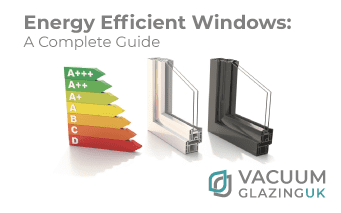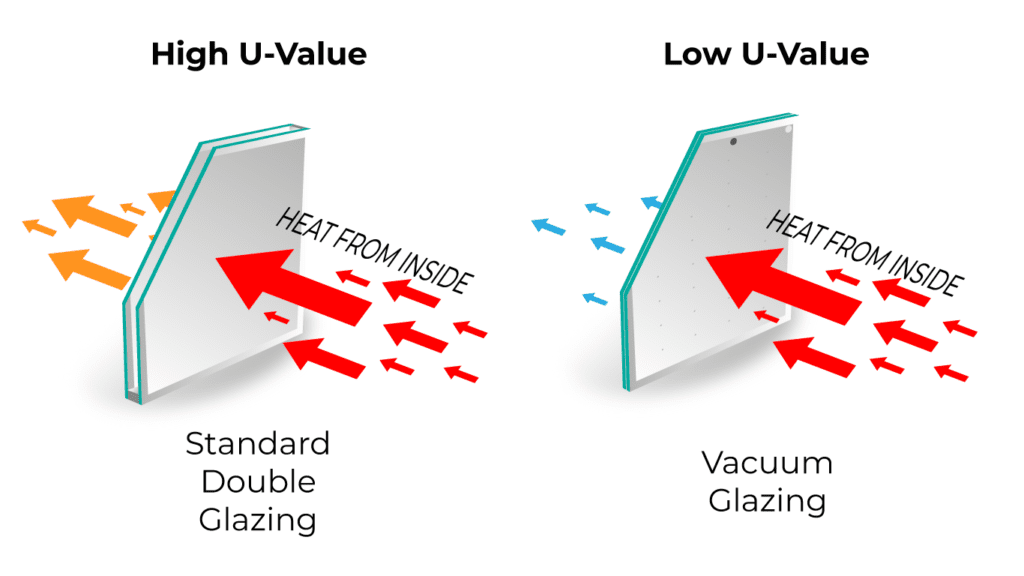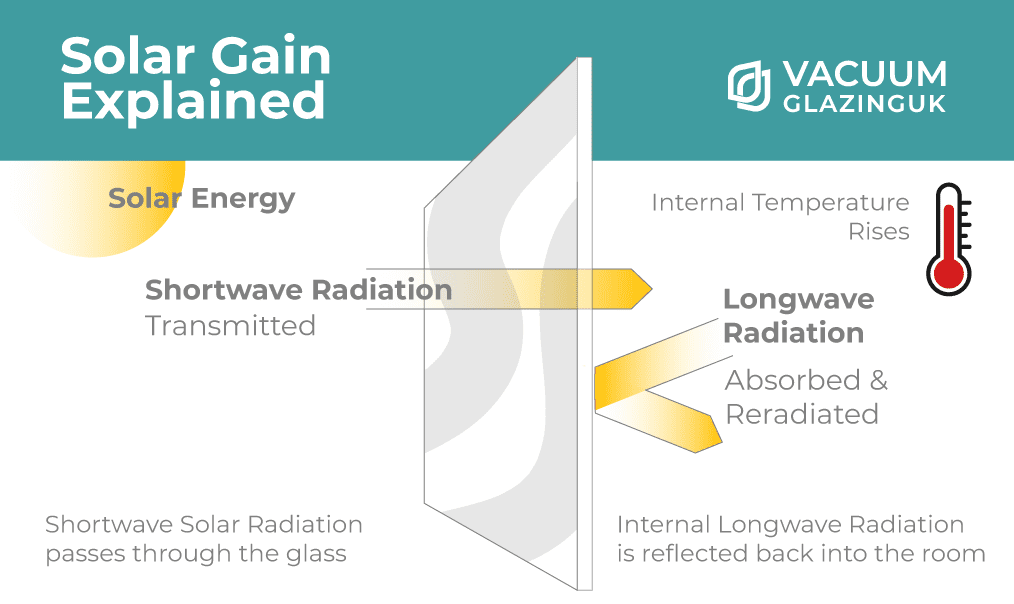
Energy Efficient Windows: A Complete Guide
Unlock the potential of energy-efficient windows with our comprehensive guide. Learn about ratings, factors, types, and frame materials for sustainable and cost-effective living. Make informed choices for reduced energy consumption and a comfortable home.
Ultimate Guide to Energy-Efficient Windows: Everything You Need to Know
Energy-efficient windows play a crucial role in creating a sustainable and comfortable living environment while significantly reducing energy consumption. As the world increasingly focuses on conserving energy and combating climate change, the importance of energy-efficient solutions cannot be overstated. In this comprehensive guide, we will delve into the realm of energy-efficient windows, exploring their benefits, rating systems, and various factors that contribute to their efficiency. Whether you’re a homeowner looking to lower your energy bills or an environmentally conscious individual seeking to reduce your carbon footprint, this guide will equip you with the knowledge you need to make informed decisions about energy-efficient windows. Get ready to unlock the potential of these remarkable windows and transform your living spaces into efficient, comfortable, and environmentally friendly havens.
Understanding Energy Efficiency Ratings
The Importance of Energy Efficiency Ratings
Energy efficiency ratings play a crucial role in determining the performance and effectiveness of windows in reducing energy consumption and costs. Understanding these ratings is essential for making informed decisions when selecting energy-efficient windows. In this section, we will explore the significance of energy efficiency ratings and the key factors considered in these ratings.
Significance of Energy Efficiency Ratings
Energy-efficient windows offer numerous benefits beyond insulation, including cost savings, improved comfort, and environmental sustainability. By reducing heat loss and minimising the need for excessive heating and cooling, energy-efficient windows can significantly lower energy bills and decrease carbon emissions. These windows also contribute to a more comfortable indoor environment by reducing drafts, minimising condensation build-up, and blocking external noise. Moreover, they help create a sustainable future by conserving energy resources and reducing the overall environmental impact of buildings.
Energy Efficiency Rating Systems
To assist consumers in identifying energy-efficient windows, various rating systems have been established. Two widely recognised rating systems are the British Fenestration Rating Council (BFRC) and ENERGY STAR. These systems provide standardised methods for assessing and comparing the energy performance of windows. By looking for windows with higher ratings, such as A++ or ENERGY STAR certified, individuals can ensure that they are choosing products with superior energy efficiency.
Understanding Energy Efficiency Factors
Energy efficiency ratings take into account several factors that directly impact the overall performance of windows. These factors include thermal transmittance (U value), solar efficiency, and air leakage.
1. Thermal Transmittance (U Value):
The U value measures the rate of heat transfer through a window. It indicates how effectively a window retains heat inside a building. A lower U value indicates better insulation and reduced heat loss, contributing to improved energy efficiency.

2. Solar Efficiency:
Solar efficiency refers to a window’s ability to capture and utilise solar heat. It is represented as a number between 0 and 1, with higher values indicating better solar heat gain. Windows with higher solar efficiency can help in reducing heating requirements during colder months.

3. Air Leakage:
Air leakage measures the amount of air that enters or escapes through the window. Lower air leakage values indicate a more airtight window, which reduces drafts and improves energy efficiency by minimising heat transfer and maintaining a consistent indoor temperature.
Understanding these factors enables individuals to evaluate the energy performance of windows and make informed choices based on their specific needs and priorities. By selecting windows with lower U values, higher solar efficiency, and reduced air leakage, homeowners can optimise energy savings and enhance the overall efficiency of their buildings.
By considering energy efficiency ratings and the associated factors, individuals can make informed decisions when choosing windows that align with their energy conservation goals. Energy-efficient windows not only provide financial benefits but also contribute to a more sustainable and environmentally friendly living or working environment.
Types of Energy-Efficient Windows
When it comes to energy-efficient windows, there are various options available that offer improved insulation and energy performance. In this section, we will explore different types of energy-efficient windows and their unique features.
Double Glazing
Double glazing is a popular choice for enhancing energy efficiency in windows. It involves the use of two panes of glass with a layer of insulating gas, such as argon, sandwiched between them. The combination of multiple glass layers and the insulating gas helps to reduce heat transfer, minimise drafts, and improve thermal insulation. Double glazing offers significant benefits over single glazing, such as enhanced insulation, reduced energy consumption, improved indoor comfort, and noise reduction.
Triple Glazing
For even greater energy efficiency, triple glazing is an option worth considering. Triple glazing incorporates an additional pane of glass, creating three layers of glazing with two insulating air gaps. This additional layer further enhances thermal insulation and reduces heat loss, making triple glazing ideal for areas with harsh climates or noise pollution. It provides superior insulation properties, resulting in increased energy savings and a more comfortable living environment. However, it is essential to consider the cost implications associated with triple glazing, as it may require a higher upfront investment compared to other options.
Low-Emissivity (Low-E) Windows
Low-E windows feature a thin, transparent metallic coating on one of the glass surfaces. This coating allows short-wave solar radiation from the sun to enter the building while limiting the escape of long-wave heat radiation. By controlling the transfer of heat, low-E windows provide excellent thermal insulation and energy efficiency. They can be up to 40{672140fc81bbf8538617114bced9858b6a0cbab1d6ed15da368cdf22ee20eca7} more efficient than traditional double-glazed windows, making them an attractive option for maximising energy savings and reducing heating and cooling costs.
Vacuum Glazing
An innovative solution in the realm of energy-efficient windows is vacuum glazing. Vacuum glazing consists of two glass panes sealed together around the edges, creating an insulating vacuum layer between them. The vacuum layer eliminates air and minimises heat transfer, resulting in superior thermal insulation. Vacuum glazing offers exceptional energy efficiency, excellent acoustic performance, and a slim profile, making it an appealing choice for both residential and commercial applications. It replicates the appearance of single glazing while providing the insulation properties of double glazing, making it an ideal option for heritage buildings or those with aesthetic requirements.
Secondary Glazing
Another approach to improving energy efficiency is secondary glazing, which involves adding an extra pane of glass to the existing single-glazed window. While it may not provide the same level of insulation as double or triple glazing, secondary glazing offers cost-effectiveness and can still significantly enhance energy performance. It creates an additional barrier to reduce heat loss, minimize noise infiltration, and improve thermal efficiency without the need for replacing the entire window unit.
By understanding the different types of energy-efficient windows available, individuals can make informed decisions based on their specific requirements, budget, and energy-saving goals. Whether opting for double glazing, triple glazing, low-E windows, vacuum glazing, or secondary glazing, each option contributes to reducing energy consumption, improving thermal insulation, and creating a more sustainable and comfortable living or working environment.
The most energy-efficient replacement window is LandVac Optimum Glazing, utilizing vacuum glazing technology. It achieves exceptional thermal insulation with a low U-value of 0.4 for the center pane, leading to industry-leading whole window U-values. Unlike conventional windows, LandVac features a vacuum-sealed, ultra-thin gap that minimizes heat transfer, resulting in significantly improved energy efficiency. This advancement surpasses even low emissivity windows, making LandVac a prime choice for those seeking top-tier insulation and sustainable solutions.
Frame Material and Energy Efficiency
The frame material of windows plays a crucial role in determining their energy efficiency. In this section, we will explore different frame materials and their impact on the overall energy performance of windows.
uPVC Frames
uPVC (unplasticized polyvinyl chloride) frames are known for their excellent insulation properties, making them a popular choice for energy-efficient windows. uPVC frames provide superior thermal insulation compared to metal frames, helping to minimize heat transfer and reduce energy loss. The insulating properties of uPVC frames contribute to improved energy efficiency and can help enhance the overall performance of windows in terms of heat retention and noise reduction.
Aluminium Frames
Aluminium frames possess unique characteristics when it comes to energy efficiency considerations. While aluminium itself is a good conductor of heat, modern aluminium frames are often designed with thermal breaks or thermal barriers to minimize heat transfer. These thermal breaks help to improve the insulation properties of aluminium frames and reduce thermal conductivity. Aluminium frames offer durability, strength, and sleek design options. However, it is essential to note that without proper thermal breaks, aluminium frames may be less energy-efficient compared to other frame materials.
Steel Frames
Steel frames offer strength, durability, and design versatility. When it comes to energy efficiency, steel frames can provide excellent structural integrity and security for windows. However, steel is a highly conductive material, and without proper insulation, it can contribute to heat loss and reduced energy efficiency. To enhance the energy performance of steel frames, thermal breaks or insulating materials can be incorporated to minimize heat transfer and improve insulation properties.
Timber Frames
Timber frames are renowned for their eco-friendliness and excellent energy efficiency. The use of sustainably sourced timber as a frame material offers numerous benefits. Timber is a natural insulator, providing superior thermal performance and reducing heat transfer. Additionally, timber frames have a low thermal conductivity compared to other frame materials, minimizing energy loss and contributing to better energy efficiency. One significant advantage of timber frames is their carbon-negative production process. As trees absorb carbon dioxide during growth, timber frames have a positive impact on reducing carbon footprint. Choosing timber frames not only promotes sustainability but also offers aesthetic appeal, customization options, and a warm and inviting atmosphere.
Other Frame Materials
Depending on specific regional preferences and advancements in window technology, there may be additional frame materials available in the market. These materials may have their own energy efficiency aspects and considerations. It is important to research and consult with window professionals to understand the energy performance and benefits of any other frame materials that may be relevant to your area.
Selecting the right frame material is crucial for maximizing the energy efficiency of windows. Whether opting for uPVC frames, aluminium frames with thermal breaks, steel frames with proper insulation, or timber frames for their eco-friendliness, each choice can significantly impact the energy performance and overall sustainability of windows. Consider your specific requirements, energy-saving goals, and local environmental factors when making a decision.
Vacuum glazing windows, such as LandVac Optimum Glazing, stand out as a top choice to save energy. Their ultra-thin, vacuum-sealed design minimizes heat transfer, achieving low U-values of 0.4 for center pane and leading whole window U-values. This surpasses traditional low-emissivity coatings, resulting in significantly reduced energy consumption and enhanced insulation performance. While low-e coatings increase costs by 10{672140fc81bbf8538617114bced9858b6a0cbab1d6ed15da368cdf22ee20eca7} to 15{672140fc81bbf8538617114bced9858b6a0cbab1d6ed15da368cdf22ee20eca7}, LandVac’s advanced technology offers remarkable energy savings, making it a compelling option for energy-conscious homeowners.
While it’s commonly believed that larger windows are less energy-efficient, the reality is that they can be efficient when made with the right technology. Vacuum glazing, like LandVac Optimum Glazing, challenges this notion. The vacuum unit within LandVac stands as a pinnacle of efficiency within the unit, offering industry-leading low U-values of 0.4 for centre pane and whole window U-values. This makes larger windows with vacuum glazing a smart choice for those seeking energy efficiency without compromising on size or aesthetics.
Conclusion
In conclusion, understanding energy efficiency ratings and choosing the right window features and materials are essential for creating an energy-efficient and sustainable home. Energy-efficient windows not only contribute to reducing energy consumption and costs but also have a positive environmental impact by reducing carbon emissions.
By grasping the significance of energy efficiency ratings, you can make informed decisions when selecting windows for your home. The existence of rating systems such as the BFRC (British Fenestration Rating Council) and ENERGY STAR helps consumers identify windows with high energy efficiency. Remember that a minimum rating of C is required for a window to be considered energy-saving.
Exploring different types of energy-efficient windows, such as double glazing, triple glazing, low-emissivity (low-E) windows, vacuum glazing, and secondary glazing, allows you to weigh the benefits and costs associated with each option. Consider factors such as thermal efficiency, insulation properties, and potential energy and acoustic performance when making your choice.
Additionally, frame materials play a crucial role in the energy efficiency of windows. uPVC frames offer excellent insulation properties, while aluminium frames can be enhanced with thermal breaks. Steel frames provide structural integrity, and timber frames stand out as an eco-friendly option with superior energy efficiency and carbon-negative production.
It is important to stay updated with the latest regulations and building standards. The new Part L regulations for building highlight the emphasis on improving energy efficiency and reducing carbon emissions. Familiarise yourself with the specific requirements and energy performance targets outlined in these regulations, ensuring that the windows you choose meet the standards.
By prioritising energy efficiency in your window selection, you can create a more comfortable living environment, reduce energy costs, and make a positive impact on the environment. Consult with window professionals, consider local building codes, and make well-informed decisions based on your specific needs and goals.
Investing in energy-efficient windows is an investment in a sustainable future, where homes can be both environmentally friendly and economically efficient. Choose wisely, and enjoy the benefits of energy-efficient windows for years to come.
Find out more about our energy efficient vacuum glazing units here.